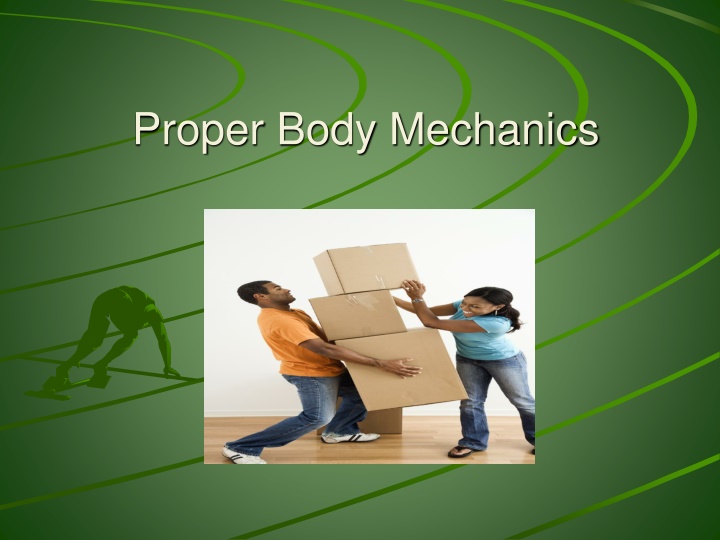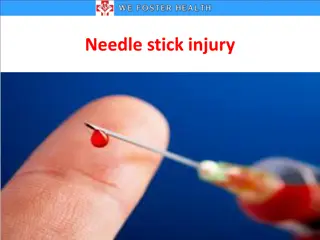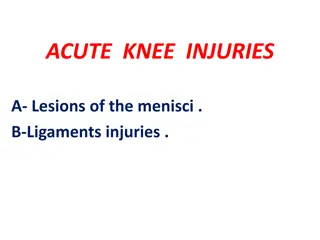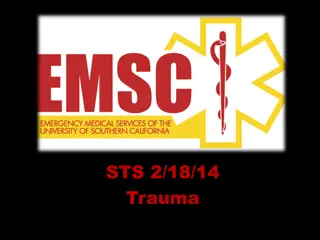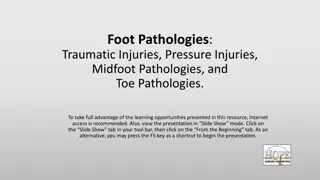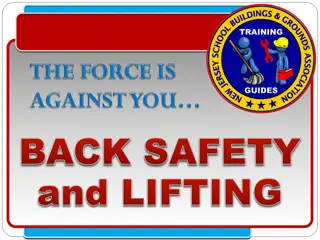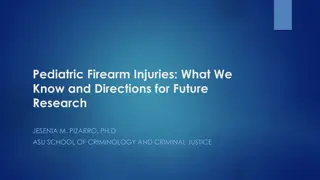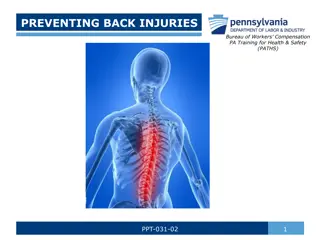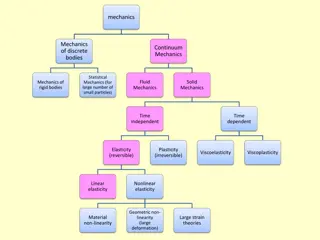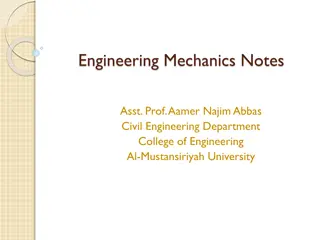Proper Body Mechanics: Benefits, Causes of Injuries & How to Prevent Them
Body mechanics involve using the body efficiently to reduce strain and promote balance. Proper body mechanics can help conserve energy, reduce stress on muscles and joints, improve respiratory function, and prevent back injuries caused by factors like poor posture, bending, and twisting. Understanding the causes of back injuries, such as overweight, smoking, and poor lifting techniques, can help in injury prevention. Maintaining good posture and avoiding repetitive movements are key in promoting a healthy back.
Download Presentation

Please find below an Image/Link to download the presentation.
The content on the website is provided AS IS for your information and personal use only. It may not be sold, licensed, or shared on other websites without obtaining consent from the author.If you encounter any issues during the download, it is possible that the publisher has removed the file from their server.
You are allowed to download the files provided on this website for personal or commercial use, subject to the condition that they are used lawfully. All files are the property of their respective owners.
The content on the website is provided AS IS for your information and personal use only. It may not be sold, licensed, or shared on other websites without obtaining consent from the author.
E N D
Presentation Transcript
Body Mechanics The use of one s body to produce motion that is safe, energy conserving, and anatomically and physiologically efficient and that leads to the maintenance of a person's body balance and control
Benefits of Proper Body Mechanics Conserve energy Reduce stress and strain to muscles, joints, ligaments, and soft tissues Promote effective, efficient respiratory, and cardiopulmonary function Promote and maintain proper body control and balance Promote effective, efficient, and SAFE movements
Causes of Back Injuries Increase force/stress Repetitive motion/twisting Forward bending Poor or improper lifting techniques Poor posture Poor job design Poor physical fitness
Causes of Back Injuries Overweight Smoking Poor nutrition Stress
Mechanics: Poor Posture One of the main reason that injuries occur Means that the spine s normal curves are exaggerated or decreased creating stresses and strains in the tissues The result is pain and dysfunction and can lead to serious injury
Mechanics: Forward Bending Forward bending can over stretch the low back muscles to the point where they can lose strength to protect the spine from injury The ligaments are also weakened Can increase stress on the discs Range of the bend and time spent in the position can determine amount of damage
Mechanics: Twisting Repetitive twisting can do damage to the spine It over stretches ligaments and muscles causing weakness Can damage discs especially combined with bending
Mechanics: Poor Job Design/Ergonomics Injury can occur when: Moving a load too heavy Moving a load too often Moving a load too far Twisting with a load Work too far too reach Cold temperatures Vibration Improper chair/equipment
Mechanics: Poor Work Habits Poor Positions Poor Movement Improper lifting habits Make the job more difficult Repetitive twisting and bending
Mechanics: Poor Physical Fitness Decreased oxygen delivery to muscles can cause muscles to wear down and lead to weakness
Mechanics: Overweight & Smoking Creates extra work for the spine Leads to excess fatigue and wear/tear in the body Nicotine damages connective tissue decreasing circulation and oxygen in the blood which affects muscle strength
Mechanics: Nutrition & Stress Muscles need protein to repair worn musculoskeletal tissue Bones need minerals for strength Stress stiffens and weakens back muscles and increases pain sensitivity
Body Mechanics: Quick Tips Think about what you are doing Know your work environment Know the tools available Know how to use the tools
Quick Tips. Bend knees View image detail Use legs No twisting Avoid long distances Keep objects close to you
Proper Lifting Techniques Stand with feet apart one foot slightly ahead of the other Wide stance helps balance during lifting Squat down keeping back straight, keep chin tucked, and lift smoothly Keep objects close to you Bend your knees and hips using legs to lift
Proper Lifting Techniques Maintain lumbar curve Do not twist or bend sideways Face the object you are picking up If changing direction, do not twist, pivot with your feet If you reach over shoulder level, raise onto a low step to get closer to the object
Proper Lifting Techniques Push rather than pull Pushing is much easier for your back Stabilize hands on the object, keep back in extended position, and do all the pushing and moving with your legs Take your time! Hurrying causes muscles to contract inappropriately and increases chance of injury
Proper Lifting Techniques Change stressful positions often If you are sitting too long: Stand If you are standing for too long: stop and squat Carrying an object: hold the load close to the body
Prevention Keep muscles and joints flexible Interrupt stressful positions Exercise to decrease weight Maintain good sitting posture Stay in shape Maintain good standing posture Increase muscle strength Prepare safety is a lifestyle Perform back extensions Prepare for your job Wear comfortable clothes to allow movement Back safety is a lifestyle Healthy balanced diet Get plenty of rest/sleep
